Rank Species | Genus Althaea Higher classification Marshmallow plant | |
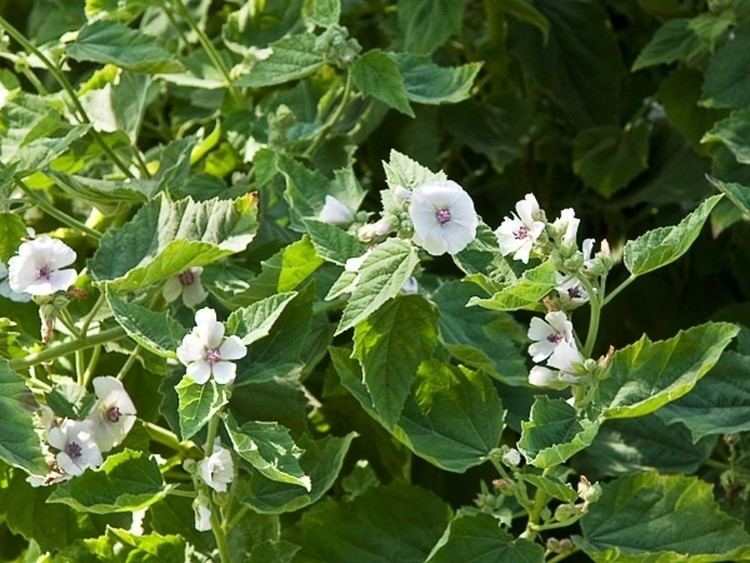 | ||
Similar Mallow, Yarrow, Field horsetail, Common Nettle, Lemon balm | ||
Survival medicine marsh mallow althaea officinalis
Althaea officinalis (marsh-mallow, marsh mallow (Persian: خطمی، ختمی, Arabic: ختمية الطبية، خبيز), or common marshmallow) is a perennial species indigenous to Europe, Western Asia, and North Africa, which is used as a medicinal plant and ornamental plant. A confection made from the root since ancient Egyptian time evolved into today's marshmallow treat.
Contents
- Survival medicine marsh mallow althaea officinalis
- Wild plant food journey s 50 marshmallow althaea officinalis the original sweetmeat
- Description
- Herbal medicine
- Culinary
- Chemistry
- References
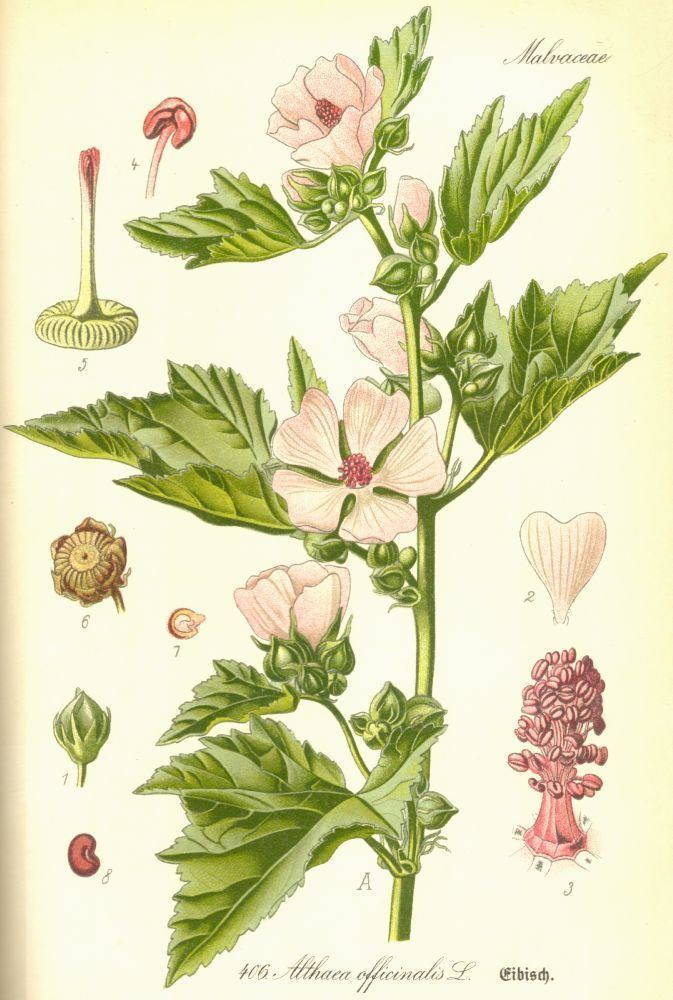
Wild plant food journey s 50 marshmallow althaea officinalis the original sweetmeat
Description
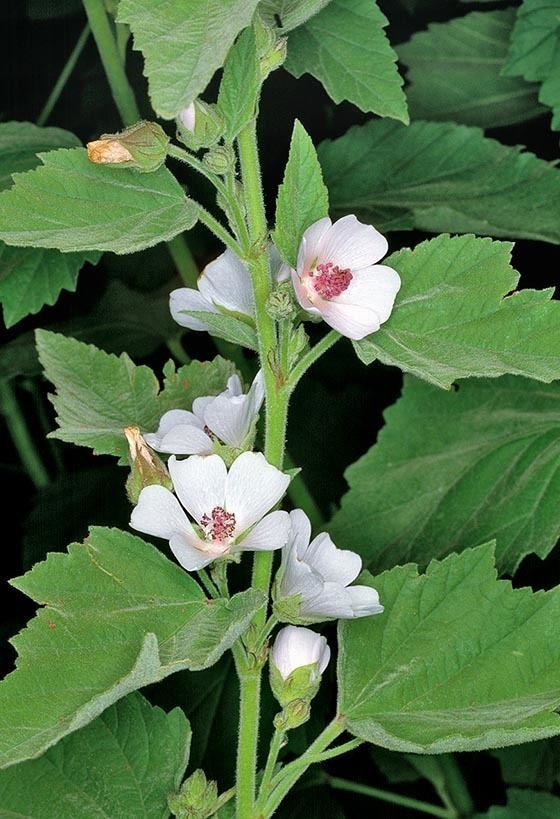
The stems, which die down in the autumn, are erect, 3 to 4 ft (0.91 to 1.22 m), but can reach 6′6″ (2m), simple, or putting out only a few lateral branches. The leaves, shortly petioled, are roundish, ovate-cordate, 2 to 3 in (51 to 76 mm) long, and about 1 1⁄4 inch broad, entire or three to five lobed, irregularly toothed at the margin, and thick. They are soft and velvety on both sides, due to a dense covering of stellate hairs. The flowers are shaped like those of the common mallow, but are smaller and of a pale colour, and are either axillary, or in panicles, more often the latter.
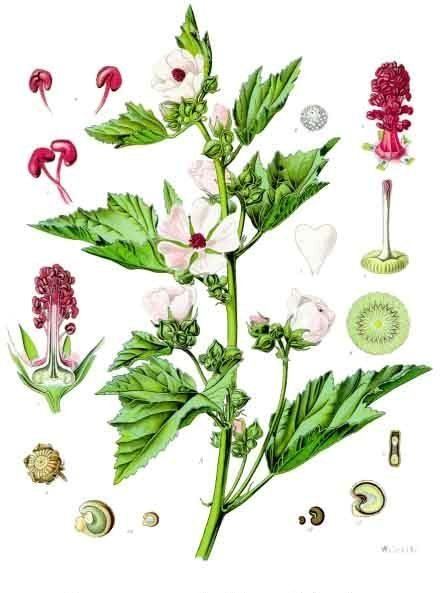
The stamens are united into a tube, the anthers, kidney-shaped and one-celled. The flowers are in bloom during August and September, and are followed, as in other species of this order, by the flat, round fruit which are popularly called "cheeses".

The common mallow is frequently called "marsh mallow" by country people, but the true marsh mallow is distinguished from all the other mallows growing in Great Britain by the numerous divisions of the outer calyx (six to nine cleft), by the hoary down which thickly clothes the stems and foliage, and by the numerous panicles of blush-coloured flowers, paler than the common mallow. The roots are perennial, thick, long and tapering, very tough and pliant, whitish yellow outside, white and fibrous within.
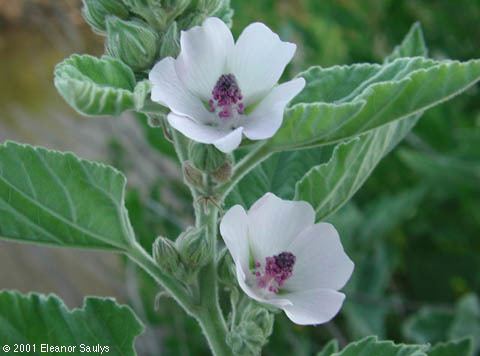
The entire plant, particularly the root, abounds with a mild mucilage, which is emollient to a much greater degree than the common mallow. The generic name, Althaea, is derived from the Greek ἄλθειν (to cure), from its healing properties. The name of the family, Malvaceae, is derived from the Latin malva, a generic name for the mallows and the source of the English common name mallow.
Most of the mallows have been used as food, and are mentioned by early classic writers with this connection. Mallow was an edible vegetable among the Romans; a dish of marsh mallow was one of their delicacies. Prospero Alpini stated in 1592 that a plant of the mallow kind was eaten by the Egyptians. Many of the poorer inhabitants of Syria subsisted for weeks on herbs, of which marsh mallow is one of the most common. When boiled first and fried with onions and butter, the roots are said to form a palatable dish, and in times of scarcity consequent upon the failure of the crops, this plant, which grows there in great abundance, is collected heavily as a foodstuff.
Herbal medicine
The leaves, flowers and the root of A. officinalis (marshmallow) have been used in traditional herbal medicine. This use is reflected in the name of the genus, which comes from the Greek ἄλθειν (althein), meaning "to heal." In traditional Chinese medicine, Althaea officinalis is known as 藥蜀葵 (pinyin: yàoshǔkuí).
Marshmallow is traditionally used for irritation of mucous membranes, including use as a gargle for mouth and throat ulcers and gastric ulcers. The root was used in the Middle Ages for sore throat.
Culinary
The root extract (halawa extract) is sometimes used as flavoring in the making of a Middle Eastern snack called halva. The flowers and young leaves can be eaten, and are often added to salads or are boiled and fried. The later French version of the recipe, called pâte de guimauve (or guimauve for short), included an egg white meringue and was often flavored with rose water. Pâte de guimauve more closely resembles contemporary commercially available marshmallows, which no longer contain Althaea officinalis. Horace mentions it in reference to his own diet, which he describes as very simple: Me pascunt olivae, me cichorea levesque malvae ("As for me, olives, endives, and mallows provide sustenance").
Chemistry
Chemical constituents include altheahexacosanyl lactone (n-hexacos-2-enyl-1,5-olide), 2β-hydroxycalamene (altheacalamene) and altheacoumarin glucoside (5,6-dihydroxycoumarin-5-dodecanoate-6β-D-glucopyranoside), along with the known phytoconstituents lauric acid, β-sitosterol and lanosterol.
